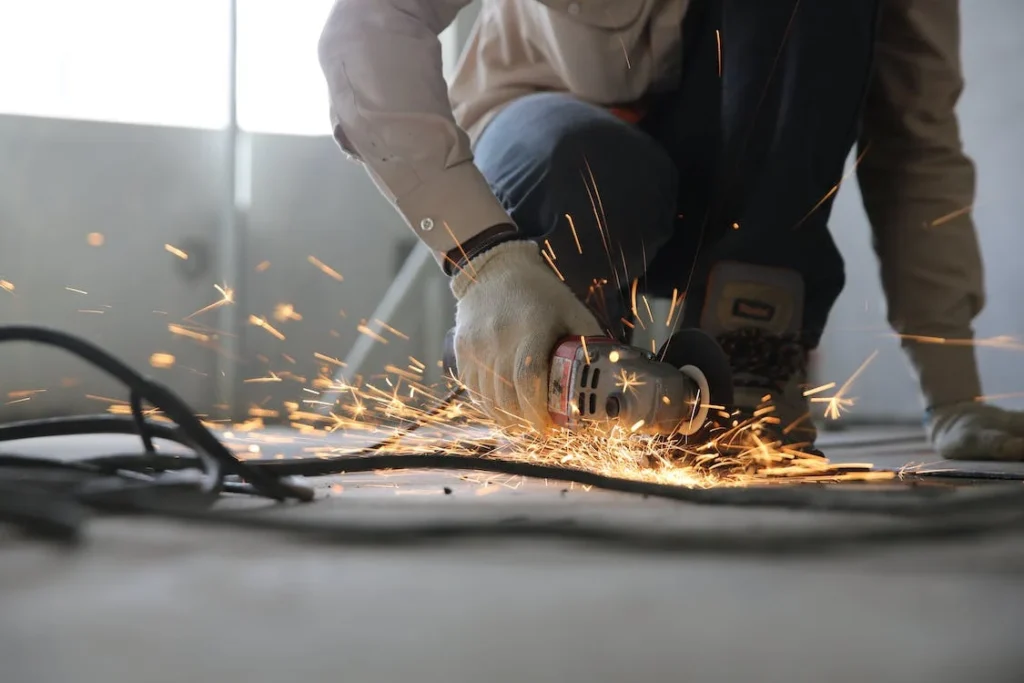The construction industry, known for its remarkable contributions to societal development, has also been infamous for its high risk and injury rates. Over the years, workplace safety has become an increasingly prominent concern. Fortunately, we are witnessing an era where technology is revolutionising various sectors, and the construction industry is no exception. Today, numerous digital solutions are stepping up to enhance safety protocols, making construction sites safer and reducing the number of workplace accidents. This article will delve into how digital solutions are modernising safety procedures in construction.

Digital Solutions and Construction Safety
It’s crucial to understand the role digital solutions play in enhancing safety in the construction industry. These technologies offer numerous benefits, such as real-time monitoring, enhanced communication, better planning and organising, improved training methods, and quicker response to emergencies.
Real-Time Monitoring
One of the significant ways digital solutions are improving construction safety is through real-time monitoring. Solutions such as IoT-enabled devices, wearables, and drones are helping keep track of workers’ health and safety on construction sites.
Wearables equipped with sensors can monitor workers’ vitals, detect falls, measure fatigue levels, and even send alerts when workers enter hazardous zones. Meanwhile, drones provide a bird’s eye view of the entire site, identify potential safety risks, and help monitor hard-to-reach or hazardous areas without putting workers’ lives at risk.
Enhanced Communication
Effective communication is crucial for safety in construction sites. Mobile applications and cloud-based platforms are now enabling instant, seamless communication among all project stakeholders.
With the help of these platforms, managers can disseminate important safety information quickly and ensure everyone on the site is aware of the latest safety protocols. Furthermore, these platforms can facilitate instant reporting of safety incidents, helping managers respond to them promptly.
Better Planning and Organising
Through Building Information Modelling (BIM) and Geographic Information System (GIS), digital solutions are making planning and organising construction projects safer and more efficient.
BIM can generate and manage digital representations of physical and functional characteristics of a facility, providing a reliable basis for decision-making. Using BIM, project managers can anticipate safety hazards before construction begins, ensuring measures are in place to prevent accidents.
Similarly, GIS can provide detailed spatial information about the construction site, helping managers understand potential geographical risks and plan accordingly.
Improved Training Methods
Safety training is a critical aspect of construction safety procedures. Here, digital solutions like Virtual Reality (VR) and Augmented Reality (AR) are making a big difference. They offer immersive, interactive training environments where workers can learn about and react to potential safety hazards without real-world consequences.
Quicker Response to Emergencies
In case of an emergency, rapid response is crucial. Digital solutions like emergency alert systems can quickly inform all site workers about the situation and guide them towards safety. Moreover, with advanced data analytics, these systems can analyse the situation and recommend the best course of action.
Implementing Digital Solutions: Challenges and Opportunities
Despite the numerous benefits that digital solutions offer, their implementation is not without challenges. These include the high initial investment, need for skilled personnel to handle these technologies, and the reluctance of some workers to adopt new technologies.
However, the opportunities that digital solutions offer far outweigh these challenges. Companies investing in these technologies are not only improving their safety procedures but are also experiencing increased productivity, cost savings, and improved quality. Moreover, a safer construction site can improve worker morale and reduce the chances of costly legal battles due to accidents.
Big Data and Machine Learning
Big Data and Machine Learning are other significant digital innovations reshaping safety procedures in construction. They deal with enormous amounts of data to discern patterns and provide actionable insights. For instance, safety managers can use data from previous accidents to identify common risk factors and develop measures to prevent similar incidents in the future.
Machine Learning can take this a step further by learning from the data to predict potential safety incidents before they occur. This proactive approach to safety can prevent accidents and save lives.

Digital Twin Technology
Another emerging technology in the construction sector is Digital Twin technology, which involves creating a digital replica of a physical construction project. This digital representation allows for precise planning, testing, and risk assessment in a safe, virtual environment. By testing different scenarios and understanding their impact on the project, construction companies can anticipate potential safety hazards and address them before the actual construction begins.
Blockchain Technology
Blockchain, although most popular in the financial sector, has potential uses in construction safety as well. It can provide a secure, transparent platform for documenting safety inspections, training, and certifications. Since data in a blockchain is immutable and traceable, it can ensure accountability and transparency in safety procedures, ultimately fostering a safety-oriented culture within the company.
Implementing Wearable Technology
Wearable technology, equipped with GPS, biometrics, and environmental sensors, is another digital solution that’s dramatically improving safety procedures in construction. These devices can track workers’ locations, monitor their vital signs, and detect harmful environmental conditions. If a worker experiences a health issue, or a potentially hazardous condition arises on-site, these devices can trigger alerts, enabling quick action and potentially saving lives.
Moreover, wearable technology can also ensure that workers are following proper safety procedures. For example, smart glasses can guide workers through complex tasks, providing step-by-step instructions to ensure they are carried out correctly and safely.
Drones for Site Inspection
Drones are another cutting-edge technology finding its way into the construction industry. Traditionally, site inspections, especially in large and high-rise projects, can be both dangerous and time-consuming. However, drones can easily and safely complete these tasks in a fraction of the time.
Equipped with high-resolution cameras and other sensors, drones can provide real-time, detailed views of construction sites, allowing for immediate identification of potential safety hazards. This not only reduces the risks associated with manual inspections but also makes the entire process more efficient.
Building a Culture of Safety
It’s important to note that while digital solutions offer promising ways to enhance safety, they are not standalone solutions. The key to improved safety lies in building a culture that values safety at all levels of the organisation. Digital solutions should be used as tools to promote and strengthen this culture, rather than replacements for a safety-oriented mindset.
Construction companies need to invest in proper training to ensure their employees understand the importance of safety protocols and know how to use digital tools effectively. Only by doing this can the full potential of these technologies be realised.
Digital solutions are revolutionising safety procedures in construction, providing new methods for risk identification, accident prevention, and safety training. However, adopting these solutions requires a significant shift in mindset and an acceptance of new ways of working. This shift might be challenging, but it is absolutely necessary for the modern construction industry. With the proper implementation of these digital solutions, construction companies can significantly reduce accidents and create a safer, more productive working environment.
Discover more about the integration of digital solutions into the construction process at WunderBuild, a leading provider of construction management software designed to streamline your construction processes. Find out more here.




